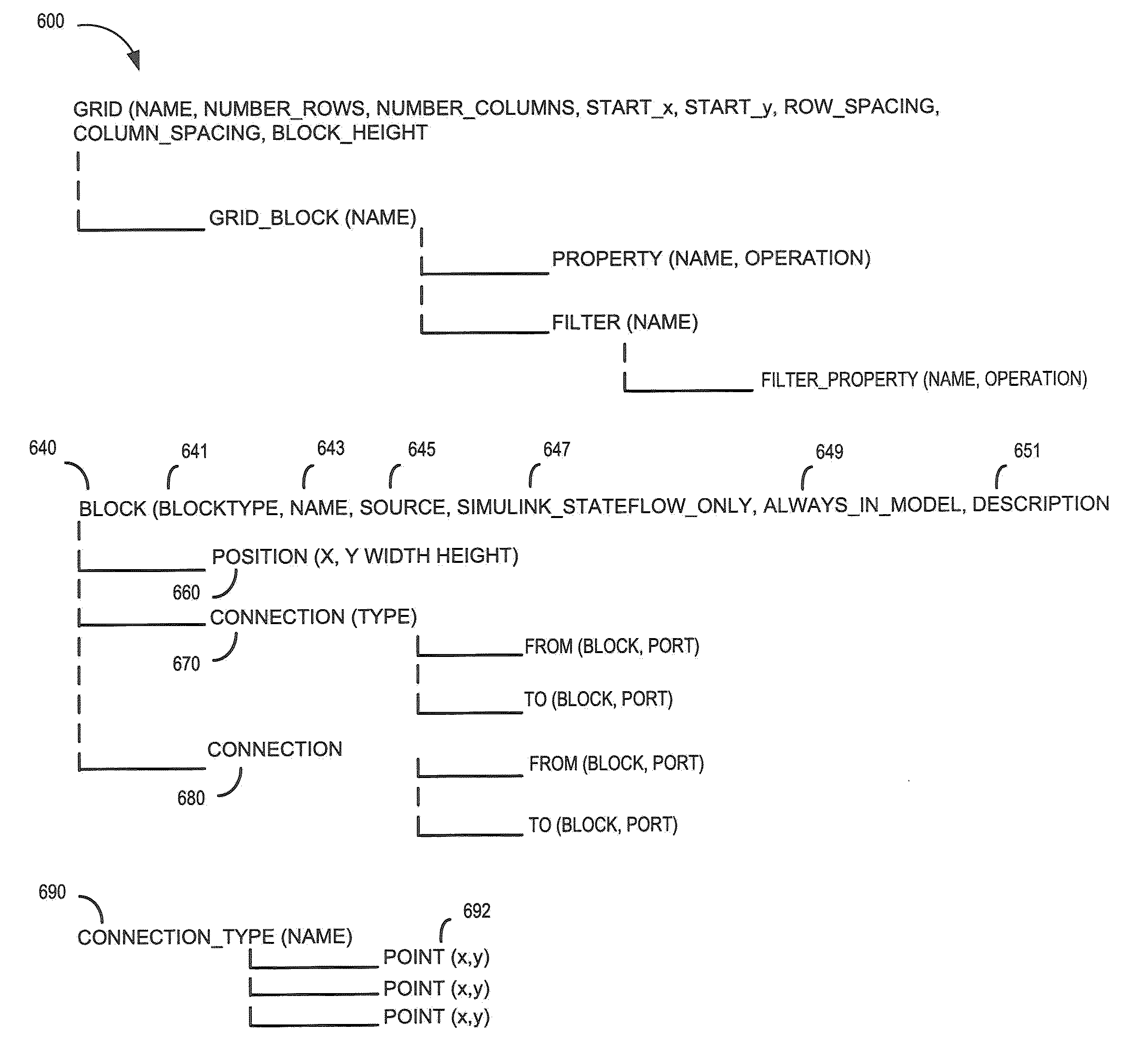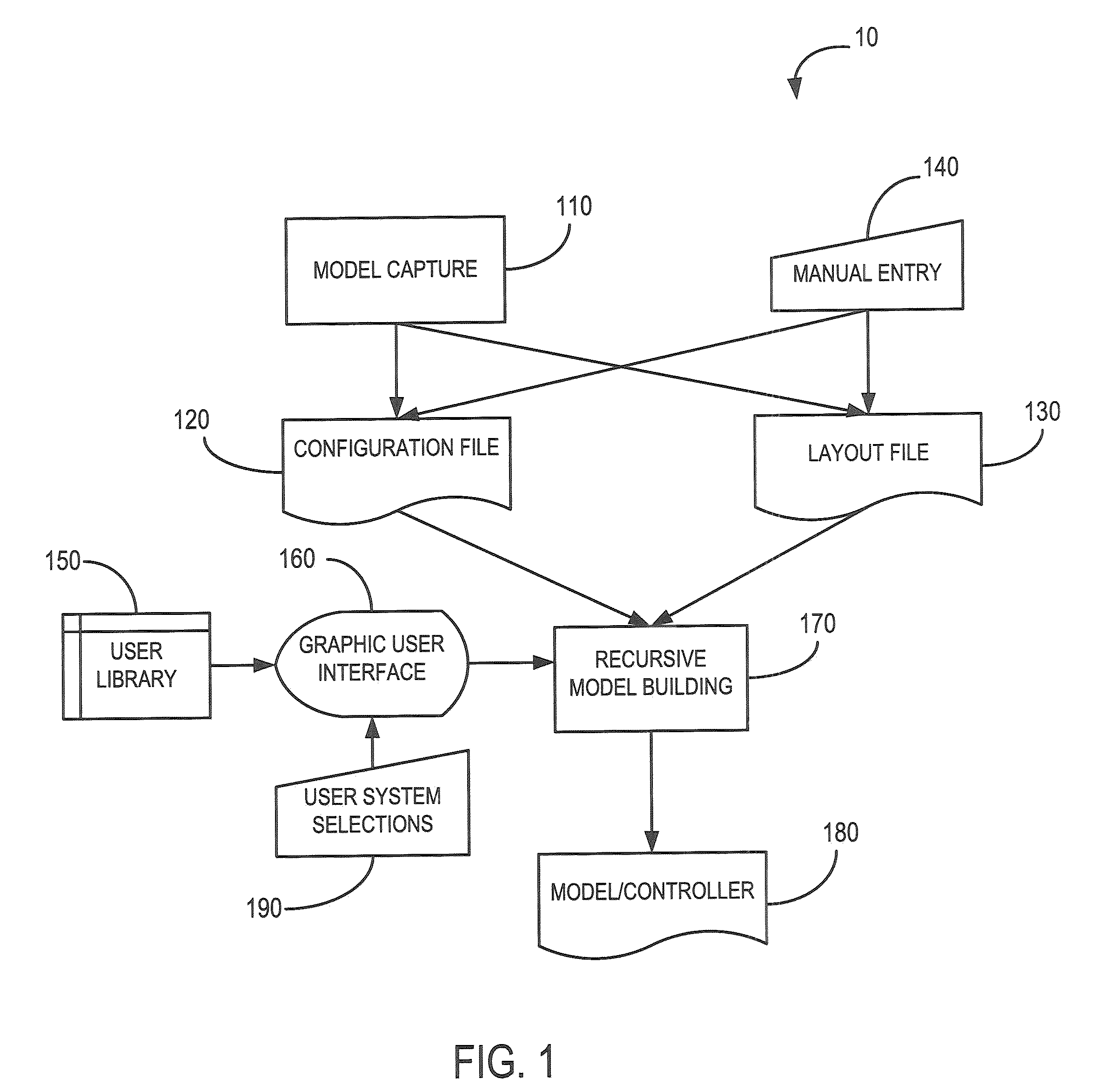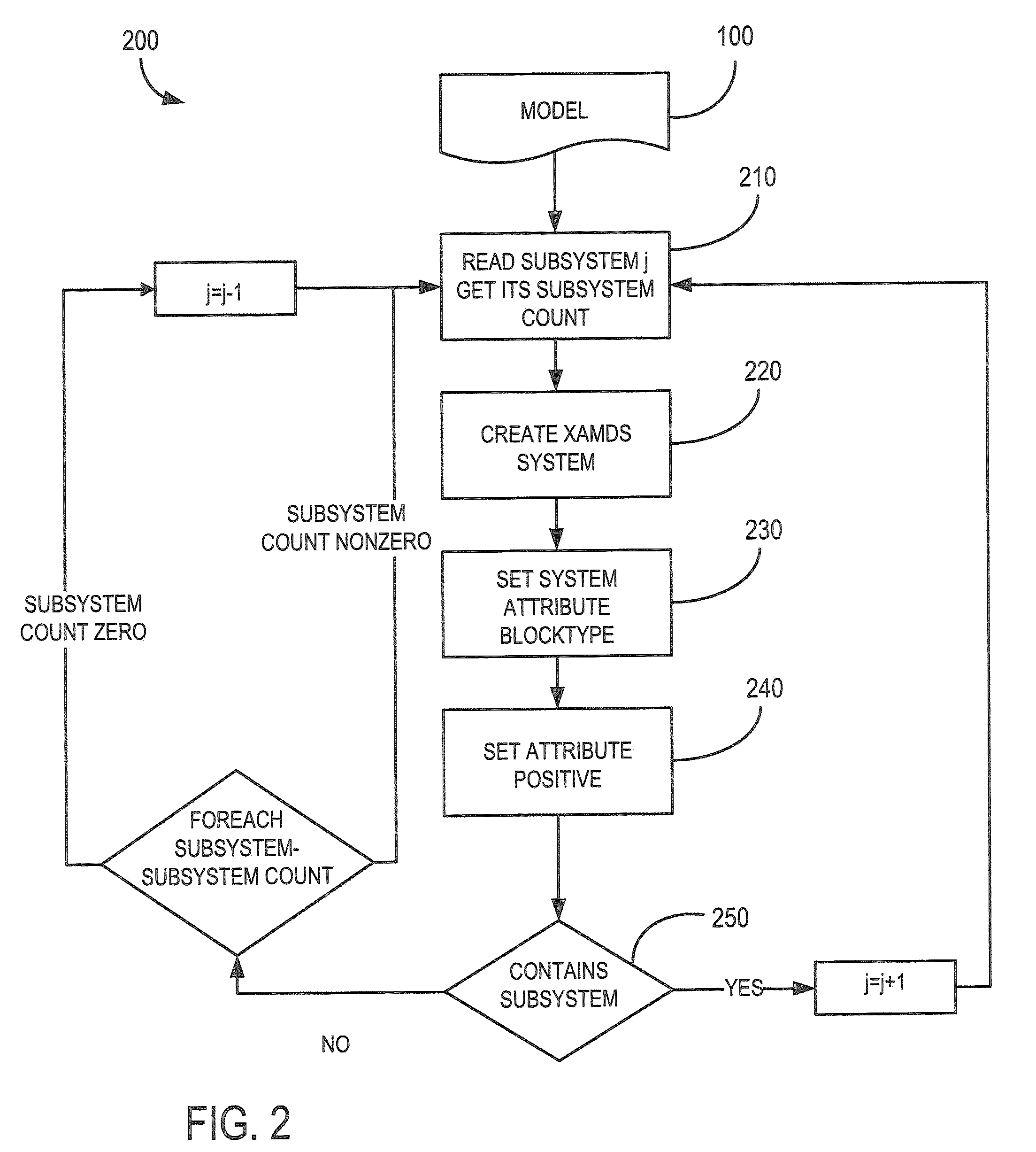Flexible evaluator for vehicle propulsion systems
a vehicle propulsion system and flexible technology, applied in the field of system and method of vehicle modeling, can solve the problems of increasing the size and complexity of simulation models, affecting the performance of vehicles, and inefficient to do so for even a reasonable number of configurations, so as to achieve the effect of efficient assembly and evaluation
- Summary
- Abstract
- Description
- Claims
- Application Information
AI Technical Summary
Benefits of technology
Problems solved by technology
Method used
Image
Examples
Embodiment Construction
[0024]FIG. 1 illustrates a flexible simulation building process 10 to evaluate vehicle propulsion systems according to one preferred embodiment of the present invention. The flexible simulation building process 10 comprises a model capture component 110, a configuration file 120, a layout file 130, a manual entry capability 140, a user library 150, a GUI 160, a recursive building component 170, an executable model 180, and a user system selections capability 190.
[0025]To facilitate explanation of the flexible simulation building process 10, the following terminology is introduced. In an embodiment, the flexible simulation building process 10 may work in conjunction with various software applications, and in a particular embodiment these may include the MATHWORKS SIMULINK / STATEFLOW software applications. A SIMULINK / STATEFLOW model may comprise multiple levels and sublevels. Any level of a model in SIMULINK / STATEFLOW may be decomposed into (a) subsystems / subcharts and (b) elements not...
PUM
 Login to View More
Login to View More Abstract
Description
Claims
Application Information
 Login to View More
Login to View More - R&D
- Intellectual Property
- Life Sciences
- Materials
- Tech Scout
- Unparalleled Data Quality
- Higher Quality Content
- 60% Fewer Hallucinations
Browse by: Latest US Patents, China's latest patents, Technical Efficacy Thesaurus, Application Domain, Technology Topic, Popular Technical Reports.
© 2025 PatSnap. All rights reserved.Legal|Privacy policy|Modern Slavery Act Transparency Statement|Sitemap|About US| Contact US: help@patsnap.com



